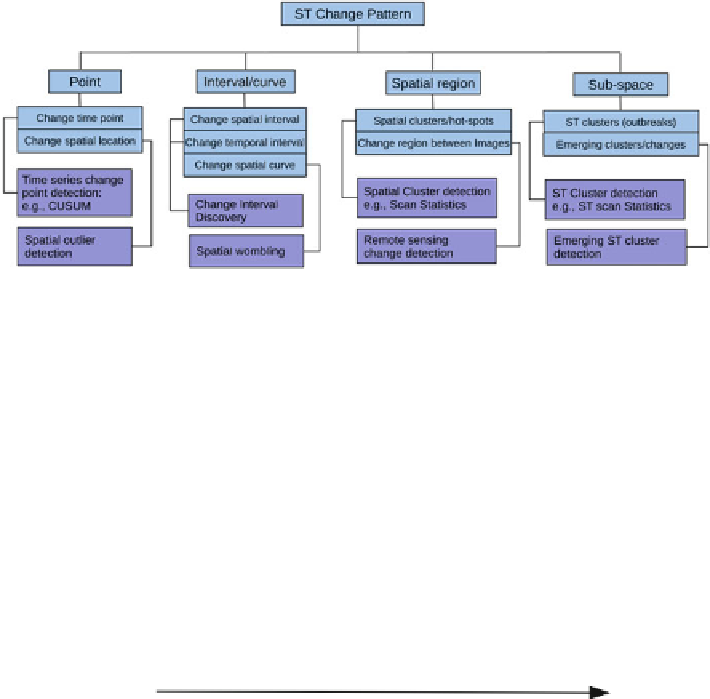Geography Reference
In-Depth Information
Fig. 17.7
A classification of ST change pattern mining output
Fig. 17.8
A space-time view of the change pattern families
17.4.1
Point Changes
The first type of change footprint is a “point”, that is a single frame in time or a
location in space. The point pattern in time series analysis is defined as the time
frame before and after which the data distributions are different (Basseville and
Nikiforov
1993
) (statistical change). This change may be led by the non-stationarity
of the underlying process, and is also referred to as “abrupt change”. For example,
in the Sahel rainfall index time series (previously shown in Fig.
17.6
a), the mean of
the data changed at the time frame of the year 1968.
A similar pattern can be found in spatial data (e.g., raster data) where the dis-
continuity occurs at a location. Due to spatial autocorrelation in most geographical














































Search WWH ::

Custom Search